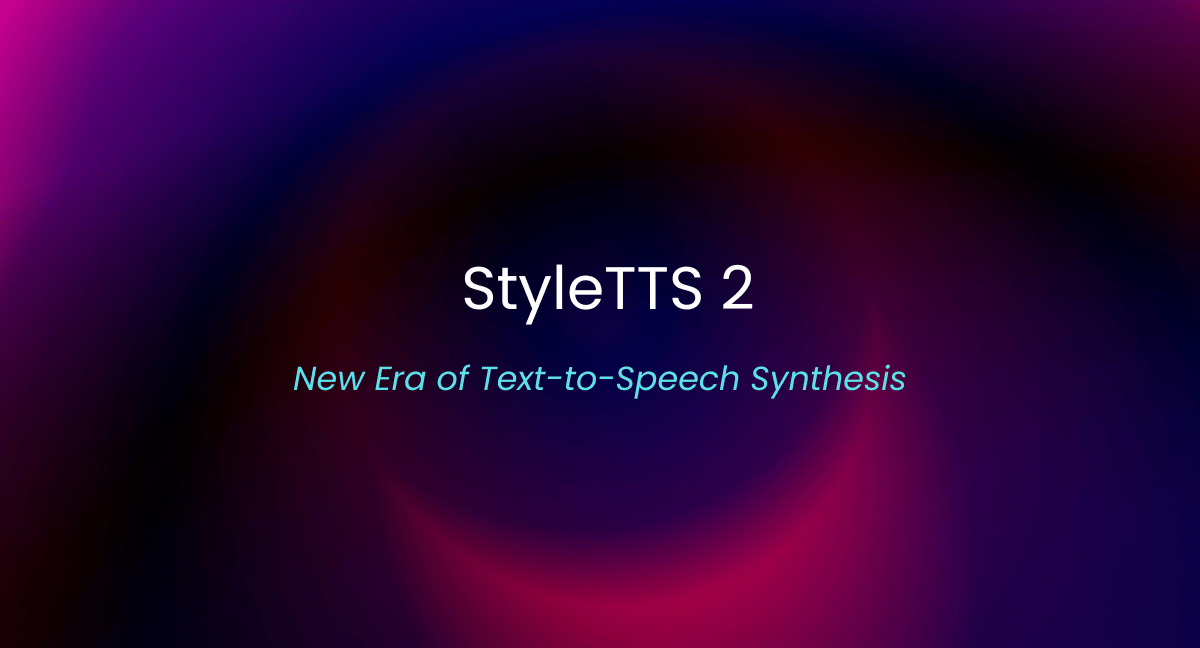The text-to-speech (TTS) technology has witnessed a remarkable evolution, and the latest milestone in this journey is the introduction of StyleTTS 2. This advanced TTS model not only sets new standards in speech synthesis but also showcases the incredible potential of style diffusion and adversarial training when combined with large speech language models (SLMs).
What Makes StyleTTS 2 Stand Out?
StyleTTS 2 is a leap forward from its predecessor, primarily due to its innovative approach to modeling styles. Unlike traditional methods that require reference speech, StyleTTS 2 utilizes latent random variables through diffusion models. This allows the system to generate the most suitable style for the given text, ensuring a more natural and appropriate speech output.
The Power of Latent Diffusion and Large SLMs
The efficiency of latent diffusion in StyleTTS 2 is further enhanced by the integration of large pre-trained SLMs, such as WavLM. These models serve as discriminators within the system, contributing to a novel differentiable duration modeling. This end-to-end training results in a significant improvement in the naturalness of the synthesized speech.
Benchmarking Success: Surpassing Human Recordings
One of the most notable achievements of StyleTTS 2 is its performance on standard datasets. On the single-speaker LJSpeech dataset, it has surpassed human recordings in terms of quality. Similarly, on the multispeaker VCTK dataset, it matches the quality of native English speakers. This level of performance is unprecedented in the field of TTS.
Zero-Shot Speaker Adaptation: A New Frontier
When trained on the LibriTTS dataset, StyleTTS 2 demonstrates exceptional capabilities in zero-shot speaker adaptation, outperforming previous publicly available models. This aspect is particularly exciting as it opens up new possibilities in personalized speech synthesis without the need for extensive training data for each new speaker.
Read More:
https://arxiv.org/pdf/2306.07691.pdf
A New Era in TTS
StyleTTS 2 is not just an incremental improvement in text-to-speech technology; it represents a significant leap towards achieving human-level TTS on both single and multispeaker datasets. The integration of style diffusion and adversarial training with large SLMs marks a new era in speech synthesis, promising more natural, adaptable, and efficient TTS systems in the future.
We research, curate and publish daily updates from the field of AI. Paid subscription gives you access to paid articles, a platform to build your own generative AI tools, invitations to closed events and open-source tools.
Consider becoming a paying subscriber to get the latest!




